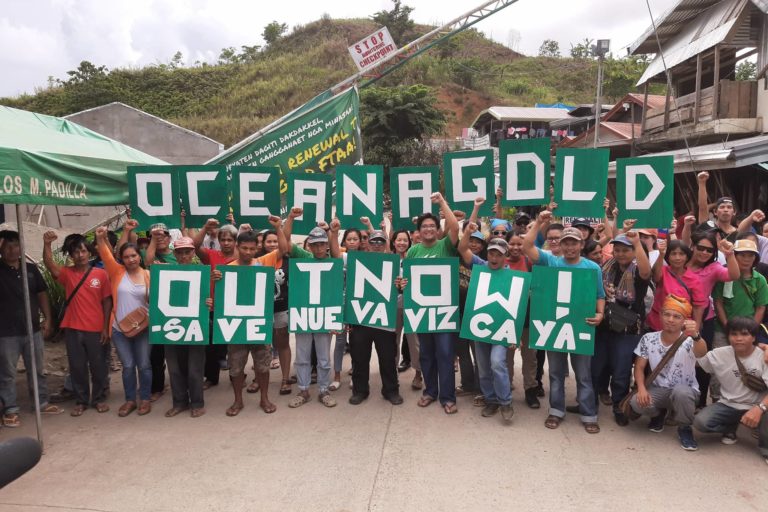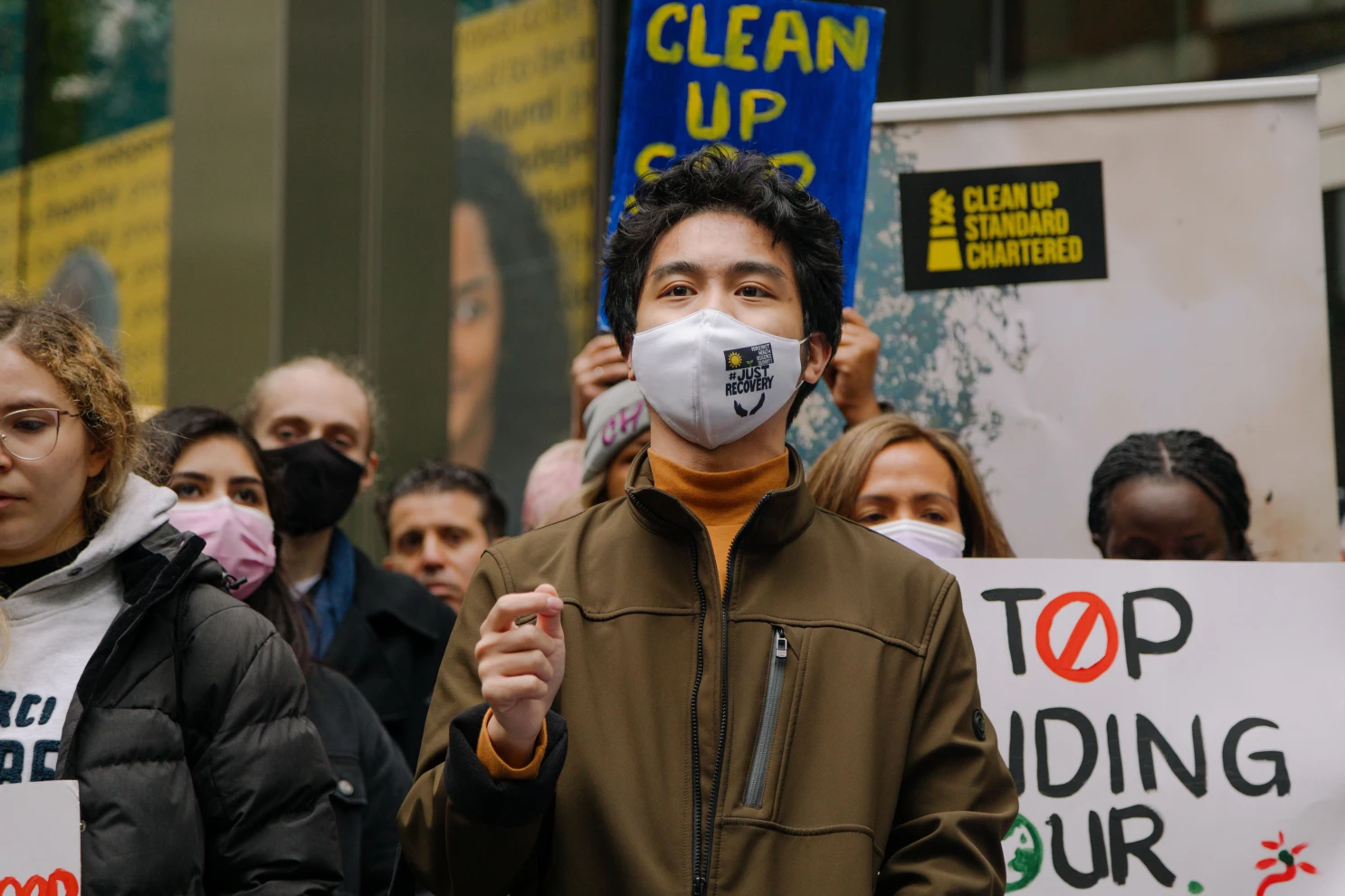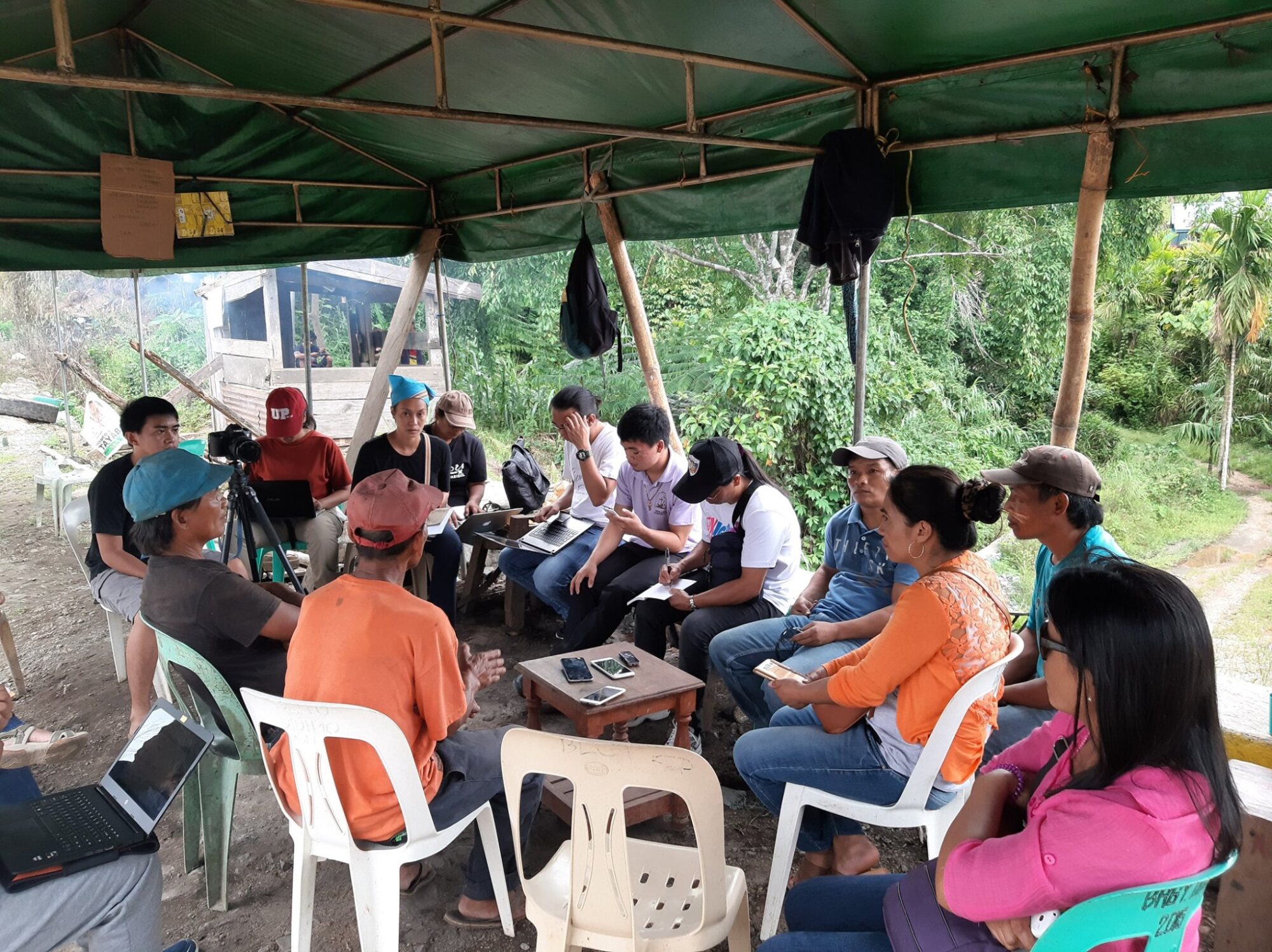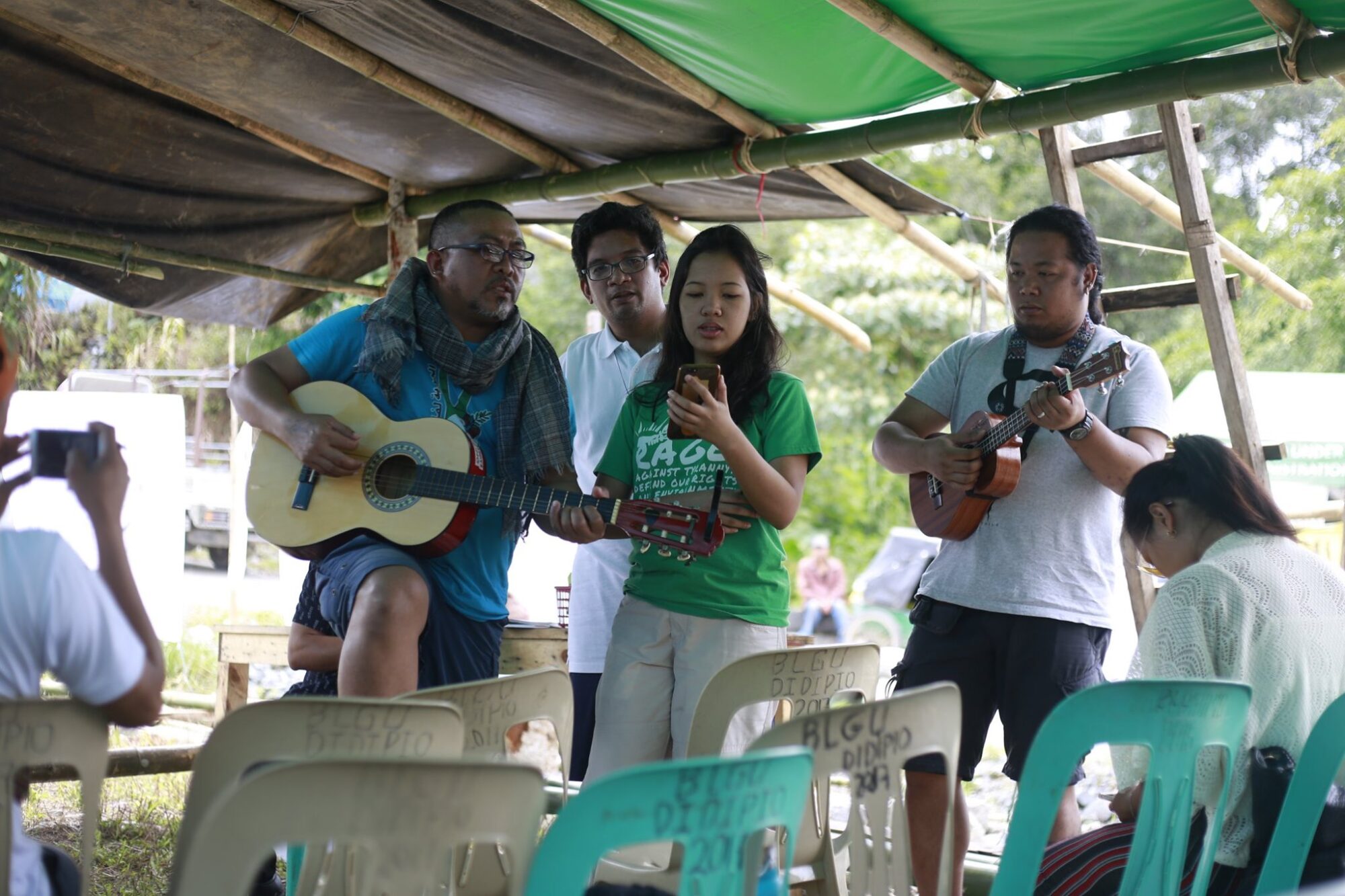
Photo: The people’s barricade against mining operations in Didipio, the Philippines. Source: J. Bonifacio, Kalikasan People’s Network for the Environment

Jon Bonifacio
Yes to Life, No to Mining – Southeast Asia
Jon Bonifacio (he/they) serves as the Southeast Asia regional coordinator of “Yes to Life, No to Mining” Southeast Asia. He is also the national coordinator of Kalikasan People’s Network for the Environment – a nationwide network of environmental organizations based in the Philippines.
June 2019 saw the emergence of a grassroots movement in northern Philippines that put a mining titan to shame — the people’s barricade in Didipio, Nueva Vizcaya (the Philippines) that successfully stalled the destructive mining operations of OceanaGold Philippines, Inc. (OGPI). Community members and allied groups were able to prevent OGPI from continuing its operations despite the expiration of the company’s permits.
For almost a year, the people’s barricade was able to stand strong in the face of harassment and attacks, showing the power of bottom-up community action in asserting our human right to inclusive development and a healthy environment.
In April 2020, almost a year into the people’s barricade and in the height of the COVID-19 pandemic, then-President Rodrigo Duterte personally authorized the entry of fuel trucks into the OGPI mining site. This led to a violent dispersal of the barricade carried out by provincial and municipal police. This incident, as well as heightened COVID-19 pandemic restrictions, ultimately led to the dissolution of the people’s barricade. The Philippine government then renewed OGPI’s permits into 2044.
But all is not lost.
Although the mining has now continued, resistance also endures as community members continue to explore legal avenues to extract reparations from the company given damages to their community, as well as to nullify the renewed financial and technical assistance agreement of OGPI. Civil society organizations are also planning more solidarity missions and environmental impact assessments in the area as OGPI continues to operate.
And the example set by the people of Didipio continues to inspire people’s organizations and civil society groups across the country and in the South-East Asian region. It also exposed how poor environmental and social regulations on the national level, as well as the presence of vested interests in government, seriously hamper any progress towards just and sustainable development.
A new framework
Civil society groups in the Philippines, for example, have joined forces to counter ecologically-destructive development at the national policy level, encapsulated in a “People’s Green New Deal” proposal in legislation. Drawing from the power of grassroots action in Nueva Vizcaya and elsewhere across the Philippines, the People’s Green New Deal (PGND) is a policy framework that presents a concrete alternative to the disastrous economic and ecological status quo. On top of tackling the destructive effects of large-scale, foreign-backed mining operations in the Philippines, the People’s Green New Deal seeks to infuse the concept of development for all with ecological attentiveness in its recognition of our ongoing climate crisis.

The concept of a “Green New Deal” has its roots in proposed policies in the United States, which in turn draws from the New Deal economic stimulus policies forwarded under the Roosevelt administration. Activists and progressive legislators in the Philippines, however, wanted to recognize the regime of unequal development that is a historical consequence of colonialism and neo-colonialism, reflected in the push for a liberalized mining sector, among other things.
Local groups see the PGND as a positive development in the struggle for climate justice, being the first “Green New Deal” in the Global South. It provides a blueprint for how the Philippines can transition to a low-carbon, climate-resilient economy, calling for a just transition for workers and communities, and an end to fossil fuel subsidies. It also sets ambitious targets for renewable energy and energy efficiency, and calls for the protection of forests and marine ecosystems. As the Philippines is one of the most vulnerable countries to climate change, such a forward-looking framework promises to deliver a better future for all, not just the elite few.
As the Philippines is one of the most vulnerable countries to climate change, such a forward-looking framework promises to deliver a better future for all, not just the elite few.
Local versions for grassroots contexts
In its current form as a house resolution, the PGND contains provisions that advocate for more rational use of natural resources, including that of minerals. It also seeks to reorient the economy of the Philippines towards internal development, rather than maintaining its current focus around exports and international markets. This is all couched in a general framework that, among other things, seeks to respect the rights of Indigenous peoples to self-determination and to conserve the environment as a whole.
Perhaps the most remarkable aspect of the PGND campaign, more than simply limiting itself to a solely legislative intervention, is the development of a version for local communities to work with and expand. By translating the provisions of the bill version into more accessible language for grassroots use, proponents of the PGND hope to also provide communities with ideas they can implement on their own even if the legislative version has not yet been enacted into law.
Inspiration for the journey ahead
Local communities in the Philippines, and around the world, have been at the forefront of social change, presenting and actualizing alternative modes of living that prioritize people and planet. A People’s Green New Deal, by and for the people, presents a concrete platform on which both national legislators and grassroots movements can build a better future.

Despite current challenges, the story of people’s resistance in Didipio remains an emblematic example of what is possible with coordinated community action – and has been built into the struggle for a People’s Green New Deal. It is a shining example of community action in the interest of people and the planet. The task is to turn this example into the norm, towards a transformed status quo that puts communities and the environment at the center of societal development.
As destructive, extractive mining projects continue across Southeast Asia — in the Philippines, Myanmar, Indonesia, and so many other countries — it is these kinds of stories that should continue to inspire resistance against the destruction of land and life, in this region and beyond.
You can read more about Yes to Life, No to Mining’s “Red Lines Statement on Extractivism” here: https://yestolifenotomining.org/latest-news/red-lines-statement-on-extractivism/
